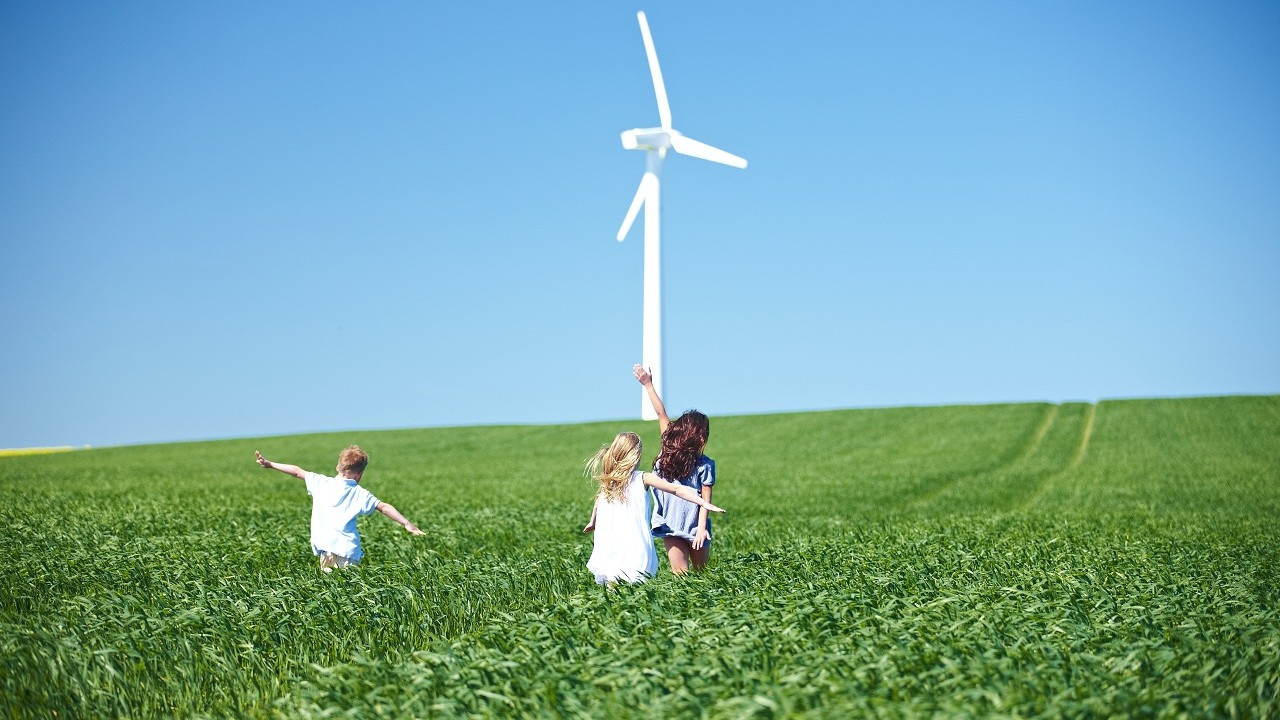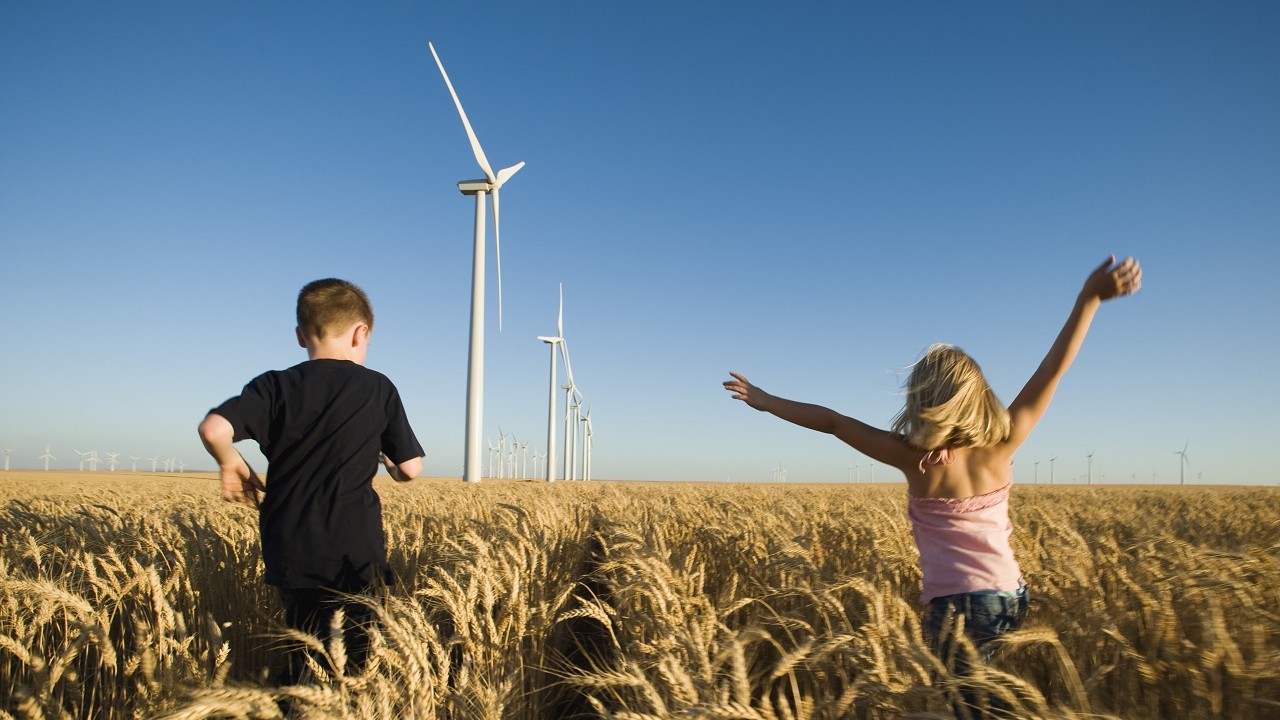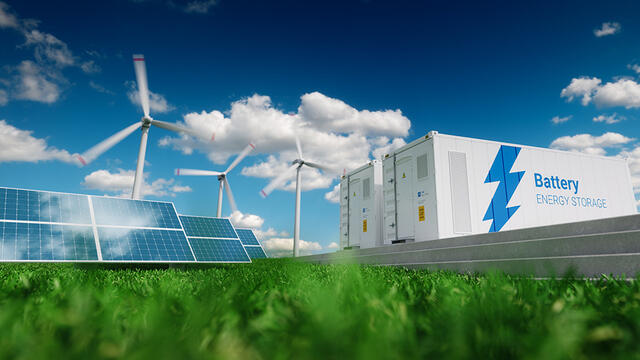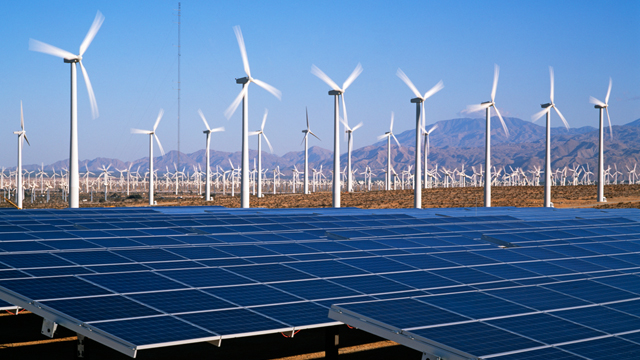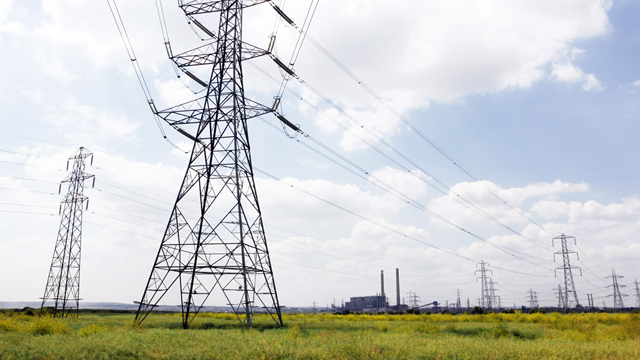The Great Grid Upgrade is the largest overhaul of the electricity grid in generations, connecting more clean, secure energy to power the things we love.
Here you’ll find answers to some of the most frequently asked questions about The Great Grid Upgrade.
Your questions about the upgrades
1. To connect new clean sources of power
The UK’s electricity grid was originally built to connect the coal- and gas-fired power stations that were built on the coal seams that ran down the centre of the country, through the industrial heartlands of the north of England and the Midlands.
Because we're now getting more power from renewable sources, this needs to change. So significant new infrastructure is needed to connect this renewable energy from where it’s generated to where it’s needed.
In particular, the extra energy that's generated offshore will need to be brought inland, which means new transmission lines are needed in order for this offshore energy to be used for powering UK homes and businesses.
2. To transmit more clean electricity around the country
Not only are Britain’s methods of generating power changing dramatically, but demand for electricity is expected to increase by 50% by 2035 and double by 2050*, as we decarbonise the energy used for things like heating and transport.
The UK has committed to connect 40GW of offshore wind to the electricity grid by 2030, making 50GW in total to meet government targets. That’s nearly enough to power every home in Great Britain** and is equivalent to taking 5.2 million petrol or diesel cars off the road, or the carbon absorption of 509 million trees over one year.***
That means our network of cables, pylons and substations will need to transmit this renewable energy from where it’s generated to where it’s needed – our homes, businesses, and communities.
The existing infrastructure simply doesn't have the capacity to transport the volume of energy that will be generated offshore. As a result, we need to upgrade our onshore electricity network.
The country’s electricity grid was originally built with the purpose of transmitting electricity created from coal- and gas-fired power stations. But as the UK moves away from fossil fuels and increases clean energy generation, we’ll all be using more electricity than ever before to power our homes, businesses and transport.
This means that we’ll need to build significant new electricity transmission infrastructure, as well as making other changes to our grid, to help the UK transition to a clean energy future.
This includes new infrastructure to bring energy that’s generated offshore – like out in the North Sea by wind turbines – inland in order to connect it to the grid.
In some areas we’ll be able to upgrade the infrastructure that already exists. In other areas, we'll need to install new wires, cables and pylons.
All of this is to ensure that there’s sufficient capacity to transport the required amounts of electricity, to make sure everyone in England and Wales has access to clean, secure energy.
Put simply, power from the wind and sun is cheap, much cheaper than imported gas. A recent study found that solar and wind energy are now the most affordable sources of new electricity in 82% of the world.
Continuing our progress towards green electricity is the most effective way to ensure energy security and affordability. We’ll be less reliant on importing expensive gas to generate electricity and can use cheaper home-grown renewable power instead, lowering energy bills in the long term.
Even when you switch to a green tariff – one that promises 100% renewable electricity, or some renewable gas – the amount of renewable energy flowing into your home doesn't change. With these tariffs, your supplier will generally buy enough renewable energy to cover what you use to fund future production, or it invests in schemes to offset carbon emissions produced from the energy you use, such as planting trees.
In order for more renewable energy to be provided to homes in England and Wales, we need to upgrade the electricity grid.
A lot of the clean energy will be from renewable, natural sources such as wind, solar and hydro (water) power. The government’s British energy security strategy sets ambitions for 50GW of offshore wind power generation by 2030, with much of this coming from the North Sea but also from offshore wind farms in other coastal locations around England and Wales.
Another source of clean energy is via high-voltage undersea cables known as interconnectors, which connect the electricity systems of neighbouring countries and allow them to share surplus power. This ensures that any renewable energy isn’t wasted and makes for a greener, more secure power system at both ends.
Because power from the wind and sun is much cheaper than imported gas, continuing our progress towards green electricity means we’ll be less reliant on importing expensive gas to generate electricity and can use cheaper home-grown renewable power instead, lowering energy bills in the long term.
The Treasury’s Net Zero Review suggested that the average electricity bill in 2050 for a household with an electric vehicle and a heat pump could be broadly similar or even lower than the average electricity, heat and transport fuel costs for a household in 2019 with an internal combustion engine vehicle and a gas boiler.
As we continue to reduce our reliance on fossil fuels and increase clean energy generation, we’ll be using more electricity than ever. Things that are currently powered by gas such as heating and cooking will be powered more and more by electricity that’s generated from clean, renewable sources. That means we’ll need a grid that’s able to carry all this extra electricity to wherever we might need it.
In the community
You can find information about all of our current projects on the Where is this happening page.
This includes details of consultation events so that you can have your say on how this should happen. If a project is taking place in your local area you’re welcome to come along, find out more and tell us what you think.
We’re committed to engaging communities as we develop our proposals and do this in a number of ways:
- We work with local communities and stakeholders to understand what’s important to them and endeavour to deliver initiatives that support those priorities – from developing skills opportunities to supporting local community projects through our Community Grant Programme.
- We work with relevant authorities as we develop our engagement plans, to ensure they’re tailored to, and meet the needs of, the local communities.
- We conduct ongoing engagement and undertake consultation exercises. For this we use different methods of communication to ensure we’re hearing a wide range of views across these communities, which hugely supports with the development of our projects.
You can find information about all of our current projects on the Where it’s happening page.
These include details of consultation events so that you can have your say on how this should happen. If a project is taking place in your local area you’re welcome to come along, find out more and tell us what you think.
Addressing the myths
Electricity transmission owners such as ourselves have licence and regulatory obligations to be economical and efficient, and in delivering The Great Grid Upgrade, we always carefully and transparently compare infrastructure options as a key part of developing our project proposals.
The government’s planning policy advises that overhead lines should be the strong starting presumption for electricity network developments in general, except where a proposed development will cross part of a nationally designated landscape.
The costs of alternative technologies to overhead lines can be significantly higher, with the undergrounding of cables around five to ten times more expensive. The cost of offshore solutions – cables under the sea – is also significant.
One example of where we’ve looked at this is in the East Anglia region, where the cost to consumers of delivering an equivalent offshore cabling solution would be around four times the cost of an onshore overhead line option.
It’s often assumed that projects like The Great Grid Upgrade are especially focused on the capital. But that’s simply not the case. It’s important to note that over 80% of UK electricity demand is outside of London – this is vital new infrastructure for the whole country and the electricity generated is distributed all over the country.
Our plan for overhauling the UK’s electricity grid includes proposals for infrastructure all over the country; for instance, building a new high voltage transmission line between East Yorkshire and Nottinghamshire, a high voltage electricity link between Suffolk and Kent, and an overhead line in Lincolnshire.
Some people think that clean energy generation will stop on a cloudy day, or when there isn’t much wind. While there are indeed some days without any wind power, there are other ways electricity can keep flowing.
One example is via high-voltage undersea cables, known as interconnectors, which connect the electricity systems of neighbouring countries and allow them to share surplus power. This ensures that renewable energy isn’t wasted and makes for a greener, more efficient power system.
In the future there will also be a greater opportunity for solar and wind power to be stored in batteries or storage plants, and nuclear has an important part in the clean energy mix too.
Read more about what happens when there’s no sun or wind power
More on The Great Grid Upgrade
What will upgrading the UK’s energy system mean for you?
Our electricity grid has served us for almost 90 years now. However, as we move from fossil fuels to cleaner energy sources this grid, the grid needs an upgrade. How will this happen and what will it mean for you?
Fact or fiction: is clean energy too expensive and not reliable?
There are lots of myths surrounding clean energy – here we separate fact from fiction.
*Climate Change Committee’s Balanced Pathway for the Sixth Carbon Budget 2020. Expected demand to increase from 300TWh per year to 450 TWh p/a by 2035 and 600 TWh p/a by 2050
** British energy security strategy - GOV.UK (www.gov.uk)
***National Grid Market Fundamentals analysis

